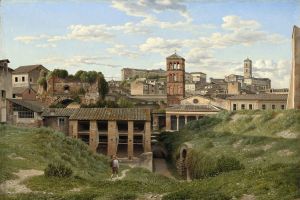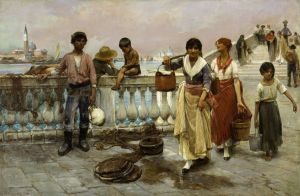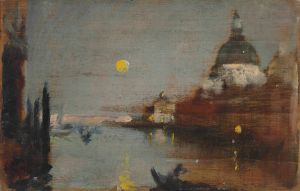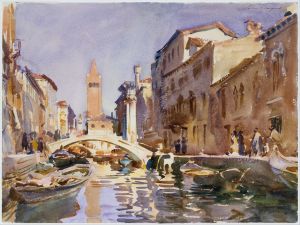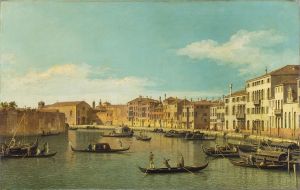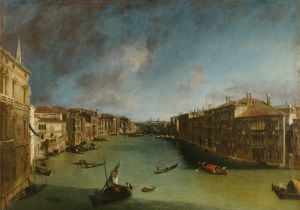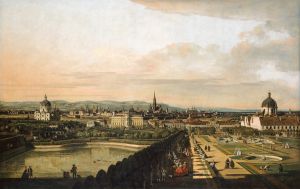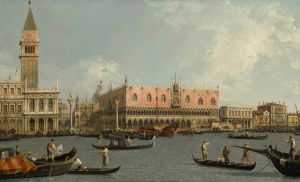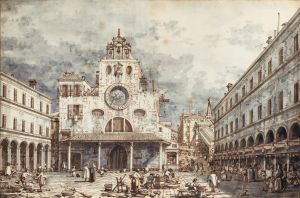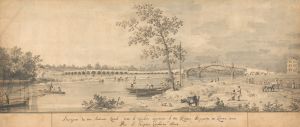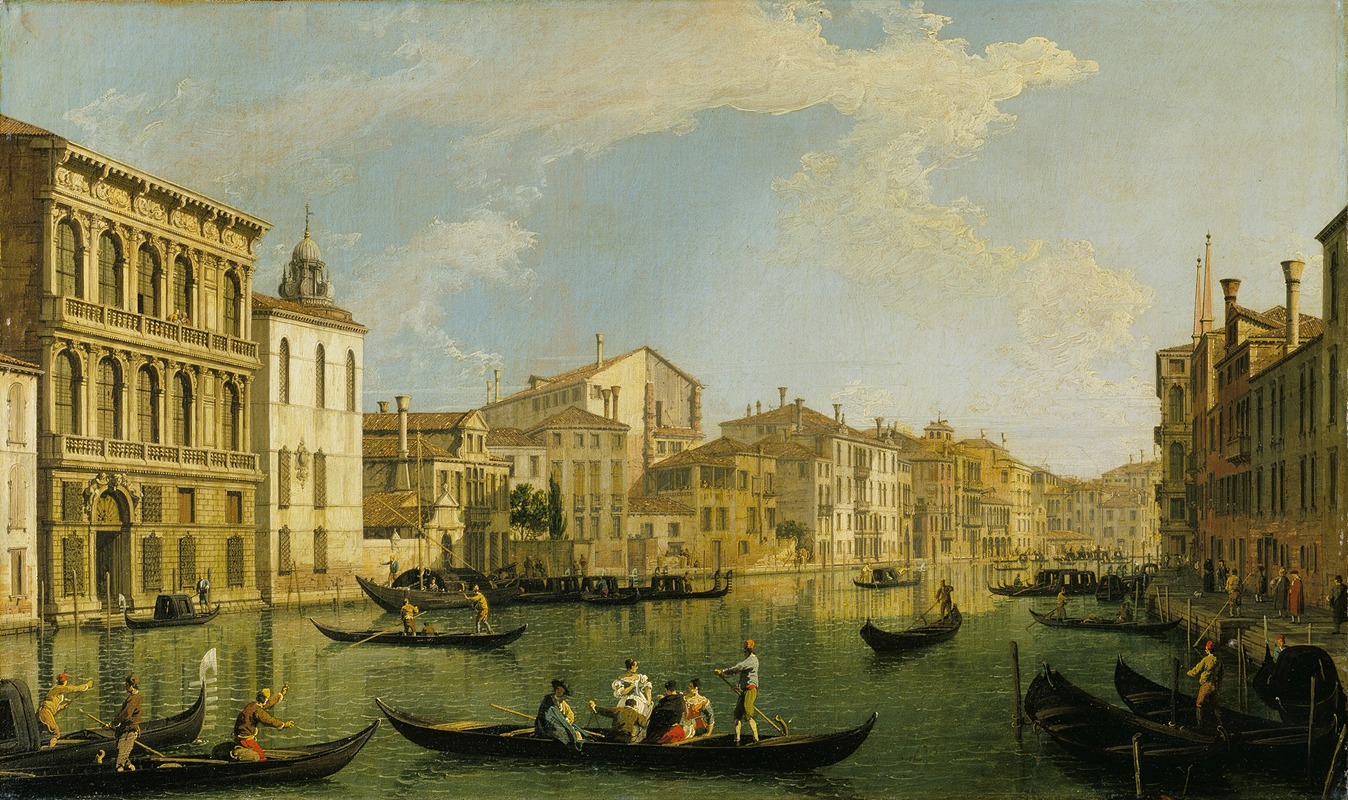
Venice, the Grand Canal from the Palazzo Flangini to San Marcuola
A hand-painted replica of Canaletto’s masterpiece Venice, the Grand Canal from the Palazzo Flangini to San Marcuola, meticulously crafted by professional artists to capture the true essence of the original. Each piece is created with museum-quality canvas and rare mineral pigments, carefully painted by experienced artists with delicate brushstrokes and rich, layered colors to perfectly recreate the texture of the original artwork. Unlike machine-printed reproductions, this hand-painted version brings the painting to life, infused with the artist’s emotions and skill in every stroke. Whether for personal collection or home decoration, it instantly elevates the artistic atmosphere of any space.
"Venice, the Grand Canal from the Palazzo Flangini to San Marcuola" is a renowned painting by the Italian artist Giovanni Antonio Canal, better known as Canaletto. This artwork is a prime example of Canaletto's mastery in capturing the essence and grandeur of Venice through his detailed and precise vedute, or cityscapes.
Canaletto was born in Venice in 1697 and became one of the most famous painters of his time, particularly known for his landscapes of Venice. His works are celebrated for their meticulous attention to architectural detail and the play of light on water, which vividly bring the scenes to life.
This particular painting, created around 1738, depicts a view of the Grand Canal, one of Venice's most iconic and vital waterways. The scene stretches from the Palazzo Flangini on the left to the church of San Marcuola on the right. The Grand Canal, often referred to as the main artery of Venice, is shown bustling with activity, with various boats and gondolas navigating its waters, reflecting the vibrant daily life of the city.
The Palazzo Flangini, a notable structure in the painting, was built in the 17th century and is characterized by its elegant façade and classical architectural elements. On the opposite side, the church of San Marcuola, dedicated to Saints Hermagoras and Fortunatus, is depicted with its incomplete façade, a detail that Canaletto accurately captured. The church, originally founded in the 12th century, was rebuilt in the 18th century, and its unfinished state during Canaletto's time is a testament to the ongoing architectural developments in Venice.
Canaletto's technique in this painting is exemplary of his style, with precise linear perspective and a keen eye for detail. The artist often used a camera obscura to achieve such accuracy in his compositions, which allowed him to trace the outlines of buildings and other elements directly onto his canvas. This method contributed to the remarkable realism and depth seen in his works.
The painting also highlights Canaletto's ability to capture the interplay of light and shadow, which adds a dynamic quality to the scene. The reflections on the water and the way light illuminates the buildings create a sense of movement and life, drawing the viewer into the heart of Venice.
"Venice, the Grand Canal from the Palazzo Flangini to San Marcuola" is housed in the Royal Collection, having been acquired by King George III in 1762. The painting remains a significant piece within the collection, showcasing Canaletto's unparalleled skill in depicting the splendor of Venice.
Overall, this painting is not only a beautiful representation of Venice but also an important historical document that provides insight into the city's architecture and daily life during the 18th century. Canaletto's work continues to be celebrated for its artistic excellence and its ability to transport viewers to the enchanting world of Venice.





